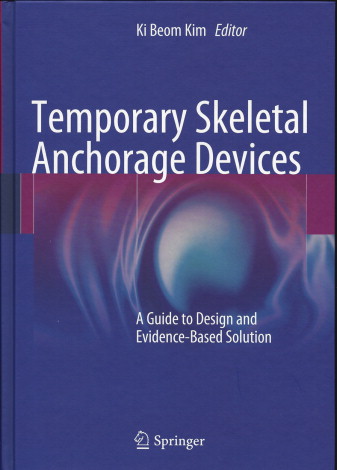Yet another new book on temporary anchorage devices? Yes, of course! Besides, it is an excellent one, edited by Ki Beom Kim, a renowned colleague who is currently an associate professor at the Center for Advanced Dental Education at St Louis University in Missouri. This book comes in hard cover and is also available in eBook format for those who prefer. Kim gathered coauthors from South Korea as well as the United States who contributed. In the opening pages, the reader finds Rolf G. Behrents’ well-founded Foreword, which we recommend reading because it perfectly matches this work. The book contains 11 chapters covering basic scientific aspects as well as more advanced clinical considerations, including the selection of various mechanics for different malocclusions, appliances, and insertion sites. The latter is of major importance because it might determine the success rate of the temporary skeletal anchorage device used. This might lead to a somewhat philosophical question: should we consider an 80% success rate as “success” or, rather, as 20% “failure”?
Although temporary skeletal anchorage devices such as orthodontic mini-implants and miniplates have been well established in orthodontic treatment for more than a decade, several questions remain unanswered. This work by Kim and his coworkers might provide some answers to orthodontists’ questions. As the title implies, the book presents the various design characteristics of temporary skeletal anchorage devices to assist clinicians in selecting the best one for their patients. The authors used clinical examples and cited relevant, up-to date literature that will enable the reader to explore further. All clinical cases and treatment procedures are well described and illustrated with high-quality color photographs that are excellently selected for their instructional value.
This book should be considered a “must have” for every orthodontic professional, the orthodontic postgraduate student, and the seasoned orthodontist; it is therefore highly recommended.





